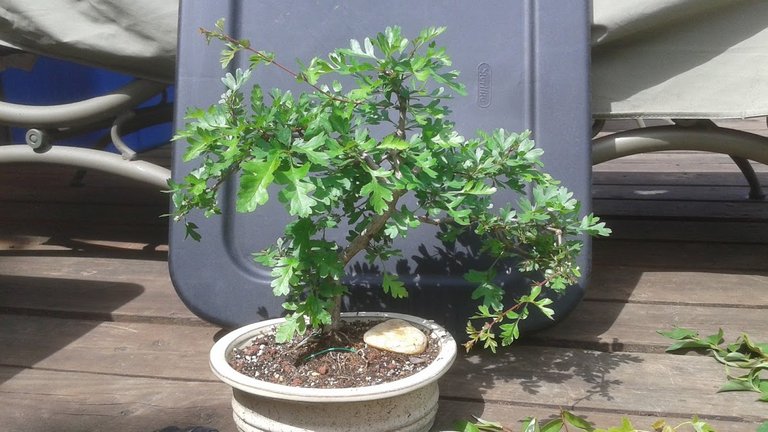
Fulminzie the splimmer until it quarms
Microscropic stymes elmhower within
Drimloo the vipenbury lillul azn sorwinkle manyney
Tamzich pulrimnic, and rayquest again.
Impractical Probundance
An Original Nonsense Poem by @creativetruth
Many of my bonsai trees are showing signs of amazing growth. An abundance of leaves and stems are being produced every day on my trees.
Today I spent a good solid hour trimming many of my young bonsai trees because they were looking they needed it, so I'll be sharing some of the before and after photos in some my upcoming posts this week.
One question that is commonly asked is:
How do you know when it is time to trim a tree?
There are some scientific answers, and there are some artistic answers. You have to learn about the type of tree you are growing to understand when it produces new growth. Different trees will only produce growth stems and leaves in certain directions from certain branches. Trimming it might affect its health depending on the current season.
I'm going to leave these topics to the experts, and give you some signs that are more based on my own personal opinion from knowledge and experience I have acquired. Below is what I generally look for during the growing season for all of my trees.
Signs that your tree might be overgrown, and needs a trim
- Trunk and primary branches are hidden from view
- Shoots and stems are longer or thicker than the branch they are connected to
- Large leaves are continuing to grow bigger, but smaller leaves and buds are not
- Many leaves or stems are clustering around a single node/junction
Overall, if your tree looks like a formless, messy mop of leaves, then it probably needs a trim.
When trimming a tree, I am describing the process of pruning mostly the new season's growth on green stems and leaves. Pruning of hardwood from the past years is not something I advise doing during the growing season. Hardwood pruning can result in the tree losing energy from sap training out of the wound, and it can permanently change the design and health of the tree. By actively pruning the new green growth, a smart bonsai artist can avoid making many unnecessary hardwood cuts later on.
So, let's get to work...
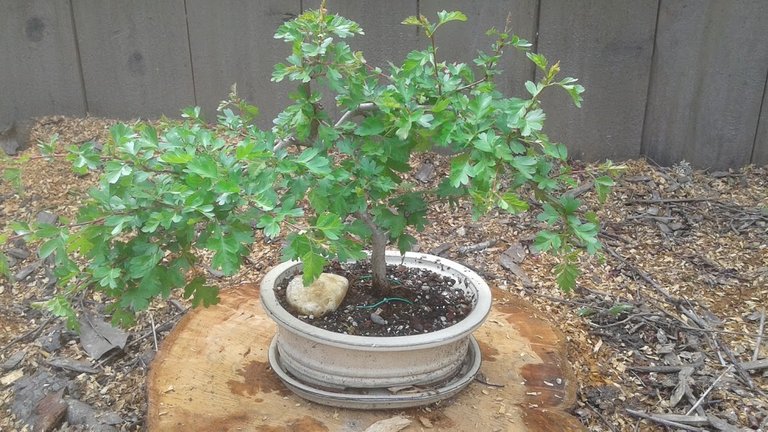
Above, this is what my tree looked like two weeks ago.
Let's take a look at some of the details on this tree. It helps me to keep track of my progress by sharing these details here on the steemit blockchain.
ID: 0012
Nickname: Candi
Type: Hawthorn
Age: 5.5 years
Grown: yamadori (collected from my own yard)
Last repotting: 2016?
Wired: never
This tree was first introduced in a wildly popular post I wrote seven months ago.
https://steemit.com/bonsai/@creativetruth/a-little-candi-for-your-daily-inspiration
Check out this link above to learn more about this tree's history, and the inspiration it has brought me.
Next, let's see what this tree looked like after it was first trimmed in April.
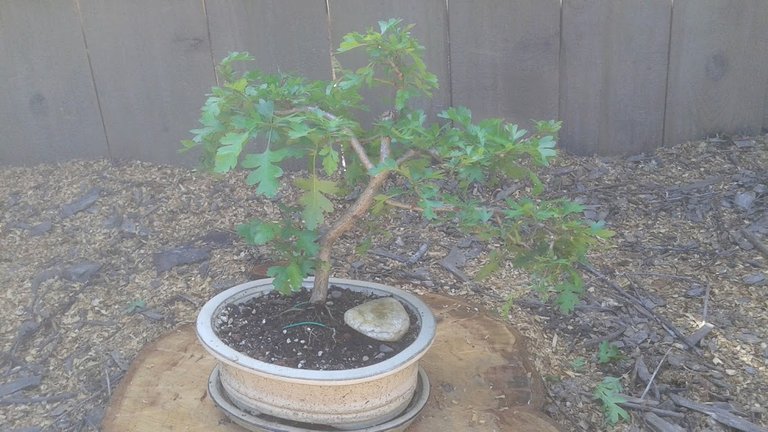
I had shortened all of the new stems to shorter lengths. That's all I did. The branches and trunk were visible again. It looks a lot better. Very easy.
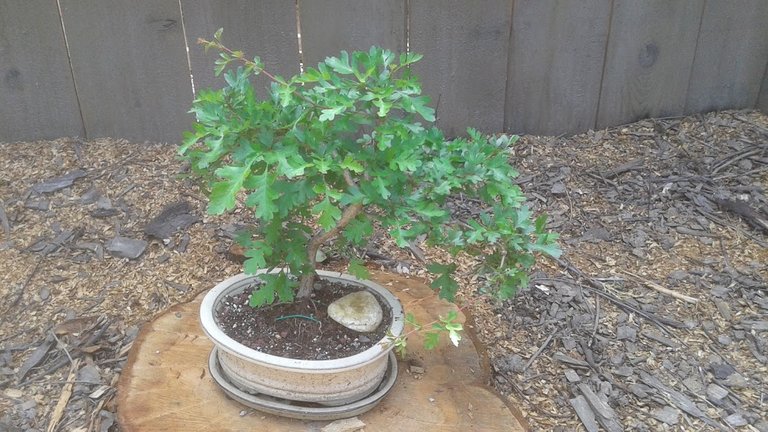
Two weeks later, this tree only had two or three shoots that were growing into long whips, yet it looked like an over-grown muffin-top to me. I pruned those whips off first. Especially, the lower whip, because it was heading backwards, heading back in front of the tree, rather than up and out.
#Hawthorns are strange, in that the young shoots prefer to grow sideways instead of upward. It makes a great twisted shape for bonsai without any training. I just have to be careful it doesn't grow itself into a knotted mess.
When I trim a new growth stem, I trim it back so it still has at least two healthy, strong leaves, or about two centimeters out from the main branch. The direction of the leaves remaining will determine the direction where the new buds will form and grow into new stems. The tree will send most of its growth for new buds to the highest points on branches and stems, so by trimming the stem to a specific leaf, I can control the direction of the next stem the tree will make there.

Above is my finished tree after thinning. Don't worry, I'm not removing anything more, but I am going to keep describing the decisions I made below with this photo as a visual reference.
My only other option to open up some void spaces within this tree was to focus on thinning the actual leaves. #Hawthorne leaves are lobe-shaped, attached to a very thin-long leaf stem. I discovered it was very easy to thin the tree by aiming my shears at these long leaf stems.
This tree was often growing five or more leaves from a single node, so I focused on eliminating the largest leaves from those areas. By removing one large leaf, it opens sunlight to three or more leaves, and also the wood where buds form.
Sometimes I was finding spotted, diseased leaves hidden underneath the large crowded leaves. Always remove diseased leaves. They could be attracting fungus or insects that will harm the tree and other leaves.
Even though I am not trimming the tree with the goal of changing it into a new shape or style, I am also removing leaves, buds, and stems that are heading mostly downward from the underside of branches. Branches look best if the underside is kept clear. Many bonsai growers are skilled at styling the tree so the underside of all leaf canopy zones on branches have a straight cut lines along the underside. I am not not that skilled yet with detailed wiring to achieve this, and my trees are still very young. I might spend more time practicing this one day. I am patient. So is my tree.
Another thing I watch out for is any stems that are forming more than two stems out from a single junction. I like to see no more than two branches connected to prevent the connected junction from swelling up like a round tumor. What I do is pick the two stems that are angled in the best directions, and then pinch off or prune all other stems at that joint. The cuts must be flush to the joint on the branch, so the extra stems will never return. If they do return, again prune them off flat against the branch with a concave cutter tool.
Hawthorne, as its name suggests, also produces terrifyingly sharp thorns. As a general rule, I do not grow plants that are harmful to people or animals that may accidentally touch it (small children and the elderly are especially curious and accident-prone), so I prefer to trim off any new thorns that I find. Thorns exist to provide shelter and protect small animals and insects from predators, which the tree has evolved to provide, because the small animals help it to pollinate and scatter seeds through the fruit berries it makes. Thorns have no true purpose in my bonsai garden, and only make it dangerously painful to me when I attempt to maintain the tree. So the thorns have got to go.
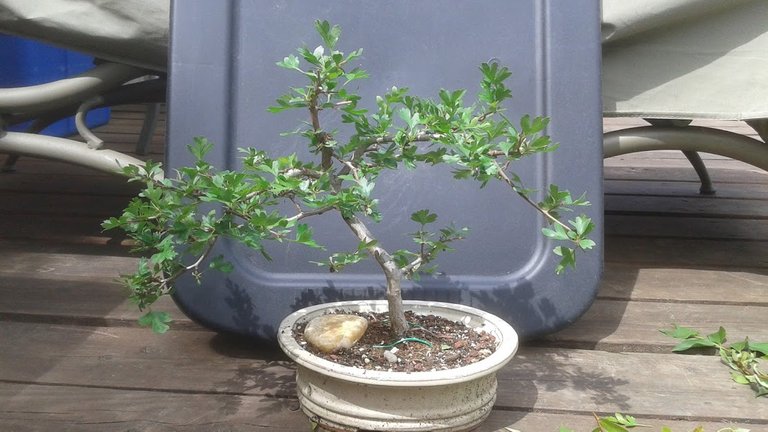
Here is another view of the finished tree after it has been trimmed. Not only does it look more appealing with smaller leaves and proportional branches, but the shortened stems will also signal the tree to produce more buds and stems along the branches in more directions.
In bonsai, one of the goals is to get these nice pads of many small stems and leaves forming along the ends of branches. In this way, each branch has a character, shape, and personality to it. The asymmetry of the tree is considered beautiful by many, as it shows flow and movement for the eye to enjoy. The void spaces between branches provides health and vigor to the branches underneath, and gives the tree the interesting silhouette, showing many branch angles and curve changes, instead of a boring circular shape.
Examining the Tree's Health
Lately, I've been noticing when I water this tree that it does not drain as well as it should. Using my watering can, the water pours over the top of the pot faster than it drains through the soil. The soil in this pot dries out faster than my other trees. This is a sign that this tree needs to have its roots pruned, and be given some fresh soil with better drainage and moisture retention. Either the soil is gunked-up with impermeable clay and roots, or the holes in the pot are blocked with roots, preventing water from escaping normally. A few of the leaves showed signs of black speckled spots, and one of the branch ends looked like it was attacked by insects because all the leaves were bitten into short pieces. Other than that, I am very happy with the health of this tree. It does not seem terribly stressed. If the tree can wait, I'll consider re-potting this tree in the autumn.
Photos in this post are all #originalworks by @creativetruth.
Find me on discord and chat with other tree growers, bonsai enthusiasts, and gardeners. We have quite a few accredited experts filling out our ranks, and a helpful Spanish-speaking community.
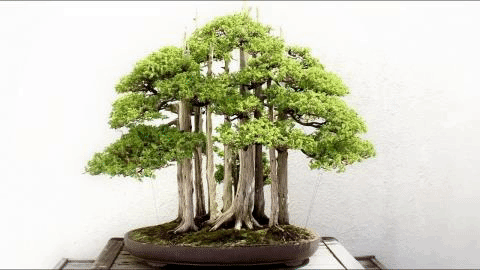
Bonus Photos
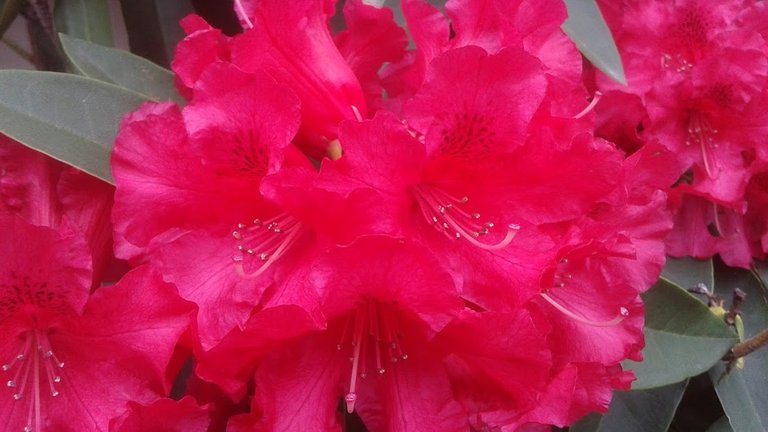
This week, I got called into the office for some work. I was really glad, because I hadn't been given very many hours this past month, and I need the income to pay for my living expenses and bills.
Finding these #rhododendrons in bloom was a welcomed sight for sore eyes.
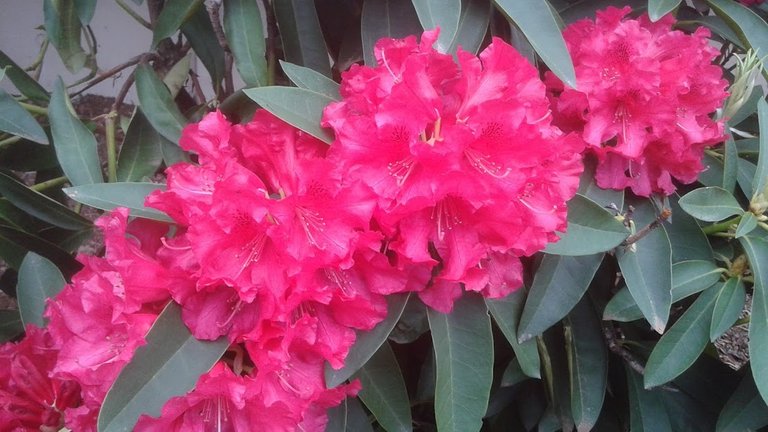
Even though these are native to the Pacific Northwest, these flowers always remind me of Hawaii in their shape and color
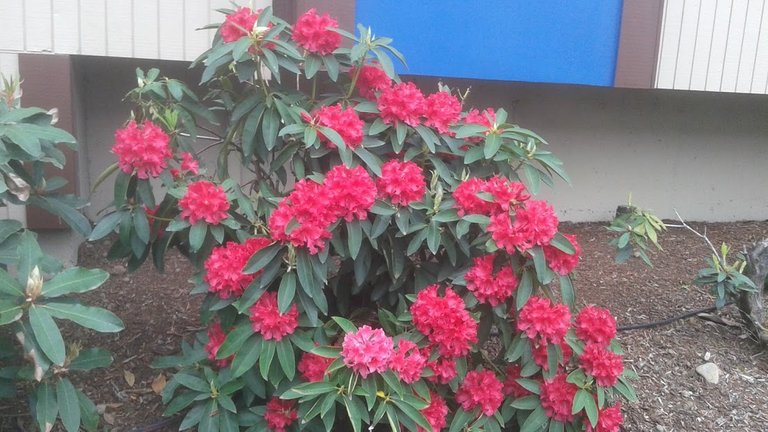
Yet they prefer our cool, wet climate.
Live free, my friends. 🍃

Good looking tree. Keep on pruning the tree you will see the results in a few years time. If you stick to you pruning technique you will be amazed at what you can achieve.
hi, first of all, thanks again for demonstrating the process to grow a bonsai. Although the said plant has not formed into shape yet the steps shown is clearly towards that direction.
I am not sure how many more month until we can train the branches into the desired shape? Time will tell, right?
The red color flowers look familiar from far but not really when I take a closer look. Nope, it is not the same "Bunga raya" we have in Malaysia. Neither it is Pink Bougainvillea flower
I believe I have not seen such type of flower in my life
Cheers
https://steemit.com/flower/@eleftheriosart/rhododendron
It is a pretty amazing flower the first time you see it. Many people collect many varieties of this shrub, creating a yard filled with fresh flowers of many colors and delicious scents through-out the summer.
Beautiful work you do. I hope to start a bonsai soon enough. Keep up the inspiration. =)
I really love your detailed posts. Bonsai trees have always fascinated me. We ordered some fruit trees to start an orchard this year. One of them came damaged so the company mailed us a replacement. The original tree is happily growing in the basement next to the west side window. I'm going to have to plant it in a pot because we have no idea where it's going to go because we have no room left right now. its a double grafted red and yellow sweet cherry. It broke at one of the grafts, altho have no idea which one. Anyway, I am learning a lot from your posts. I quite enjoy them. { :
Your passion for trees and plants is incomparable. Lots of love, sir.
Thank you back. Happy to have a few fans like you @mmasim.
nice poem.
it sums up the meaning of life perfectly.
And so much more.
I see the tree is very fertile and beautiful.
Indeed.
I am indeed looking at your work.
Bonsai style is of many types. But basically five styles.
Bonsaiity? That is a new word I have never heard.
I am glad I do not have to buy bonsai trees. I can grow them for free. Nature doesn't cost a thing.
I have always admired people for their ability to grow Bonzai. Your blog post taught me a lot about this delicate art! Thanks for sharing!
Congratulations! Your post has been selected as a daily Steemit truffle! It is listed on rank 9 of all contributions awarded today. You can find the TOP DAILY TRUFFLE PICKS HERE.
I upvoted your contribution because to my mind your post is at least 29 SBD worth and should receive 125 votes. It's now up to the lovely Steemit community to make this come true.
I am
TrufflePig, an Artificial Intelligence Bot that helps minnows and content curators using Machine Learning. If you are curious how I select content, you can find an explanation here!Have a nice day and sincerely yours,

TrufflePig